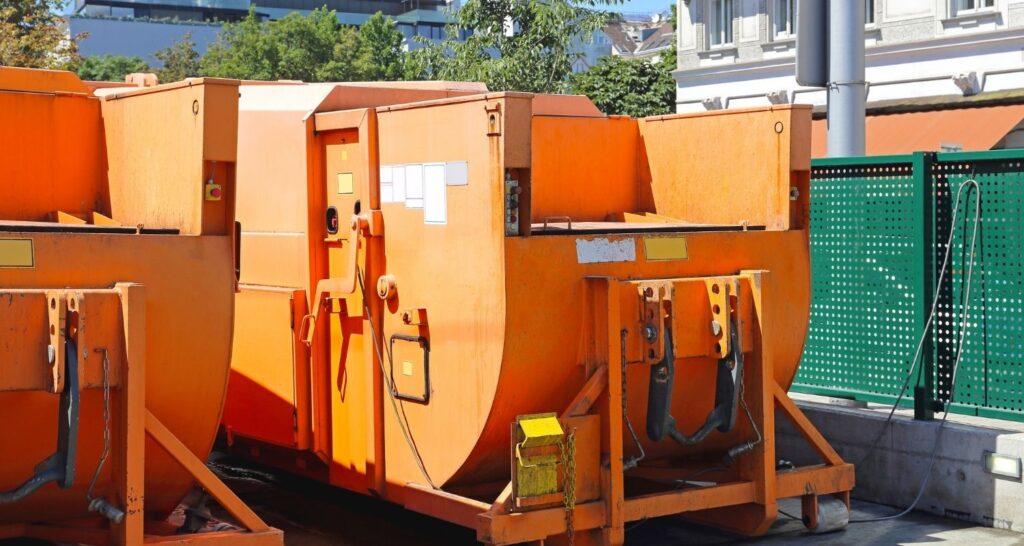What Is Compaction?
Compaction is the process of compacting or compressing matter inside itself, resulting in a reduction in physical volume without changing mass.
Functions of Waste Compacting Equipment
- Compaction in the Concrete Field: Compaction is used to remove trapped air from newly placed concrete and compress the aggregate, thus enhancing the concrete’s density. Concrete compaction increases ultimate strength, improves reinforcing bond and abrasion resistance, plus reduces permeability and reduces shrinkage and creep.
- Compaction in Waste/Recycling: Compaction is used in trash processing and recycling to reduce the amount of waste, so more can be stored or accommodated in a given area. Waste is compacted more in dumps and landfills to prolong their lives.
- Compactors in Commercial Applications: Compactors enable people to help save the environment in schools and retail centers. People constantly gather in these areas, resulting in massive waste. Due to their size, industrial waste compactors are usually required.
- Compactors in Residential Areas: Housing complexes and densely populated areas benefit most from trash compaction, which decreases the amount of garbage; hence the creation of more space, allowing for cleaner housing and surrounding environments.
- Compactors in Manufacturing Firms: Compactors provide efficient and safe rubbish handling. Manufacturing generates a lot of waste which might be harmful depending on its makeup. Hefty industrial compactors can handle such waste and greatly aid manufacturing firms.
- Compactors in the Medical Field: Hospitals generate garbage all the way from leftover meals to old medical supplies. This needs sophisticated medical waste disposal devices which assure correct disposal while protecting handlers.
- Food Industry Compactors: Hotel and restaurant garbage is mostly organic; therefore, compacting it enables optimal recycling. It also prevents the waste from entering sewage systems.
5 Types of Waste Compaction
- Self-Contained Compactors

Self-contained compactors are appropriate for scenarios involving wet garbage. The machine and container are coupled in these compactors. When filled, the whole unit is transported and emptied before being returned to its original location. The garbage is never moved into another container and is dropped straight into the landfill.
- Stationary Compactors
These compactors are the inverse of self-contained compactors. Stationary compactors are welded, bolted, or otherwise secured to the ground. They are situated outdoors, as are self-contained compactors, but this unit is never transferred to a waste management facility. Stationary compactors help in the compaction of garbage into a container; only the container is eventually transported and disposed of. These are used for dry goods, and sometimes, recyclable items.
- Vertical Balers and Compactors
Vertical balers and compactors compress recyclable (or garbage) material into blocks that can be managed and transported to a facility. These compactors are usually smaller in size when compared to other options. As a result, they’re perfect for businesses which do not generate a huge amount of garbage, nor have enough room for extensive recycling and trash compactors. Recycling balers can handle almost any recycled material including paper, cardboard, metal and plastic.
However, vertical compactors can still hold up to 25 feet of space, so although they aren’t as large as other options, they are not inconsequential. These compactors (like fixed and self-contained compactors) are kept outdoors.
- Portable Trash Compactors
Portable garbage compactors are less powerful than fixed, self-contained and vertical compactors. These compactors are usually positioned within a structure and are rather small. They are more significant than garbage compactors designed for home usage however, and are usually seen in hotels, hospitals and schools.
Portable trash compactors can handle around 1,000 gallons of rubbish instead of the normal garbage bins seen in these sorts of facilities which carry 32 to 50 gallons. These are often not ideal for extreme industrial garbage compaction such as in warehouses.
- Pre-Crushers
Pre-crushers are compactors which must be used in conjunction with a standard compactor. Their goal is to crush huge, awkward, and difficult-to-crush items to reduce the amount of the final crushed garbage.
If a huge and difficult-to-crush object is compacted without being broken down, it will leave enormous gaps in the trash, since the large pieces effectively stop anything from filling those holes. Pre-crushers prevent this from happening. These machines are excellent for very heavy-duty settings such as those found in construction and general or industrial production.
Reaction Distributing has the best lineup of waste compaction equipment available. Visit us online or call us at (866) 244-0009 today.



